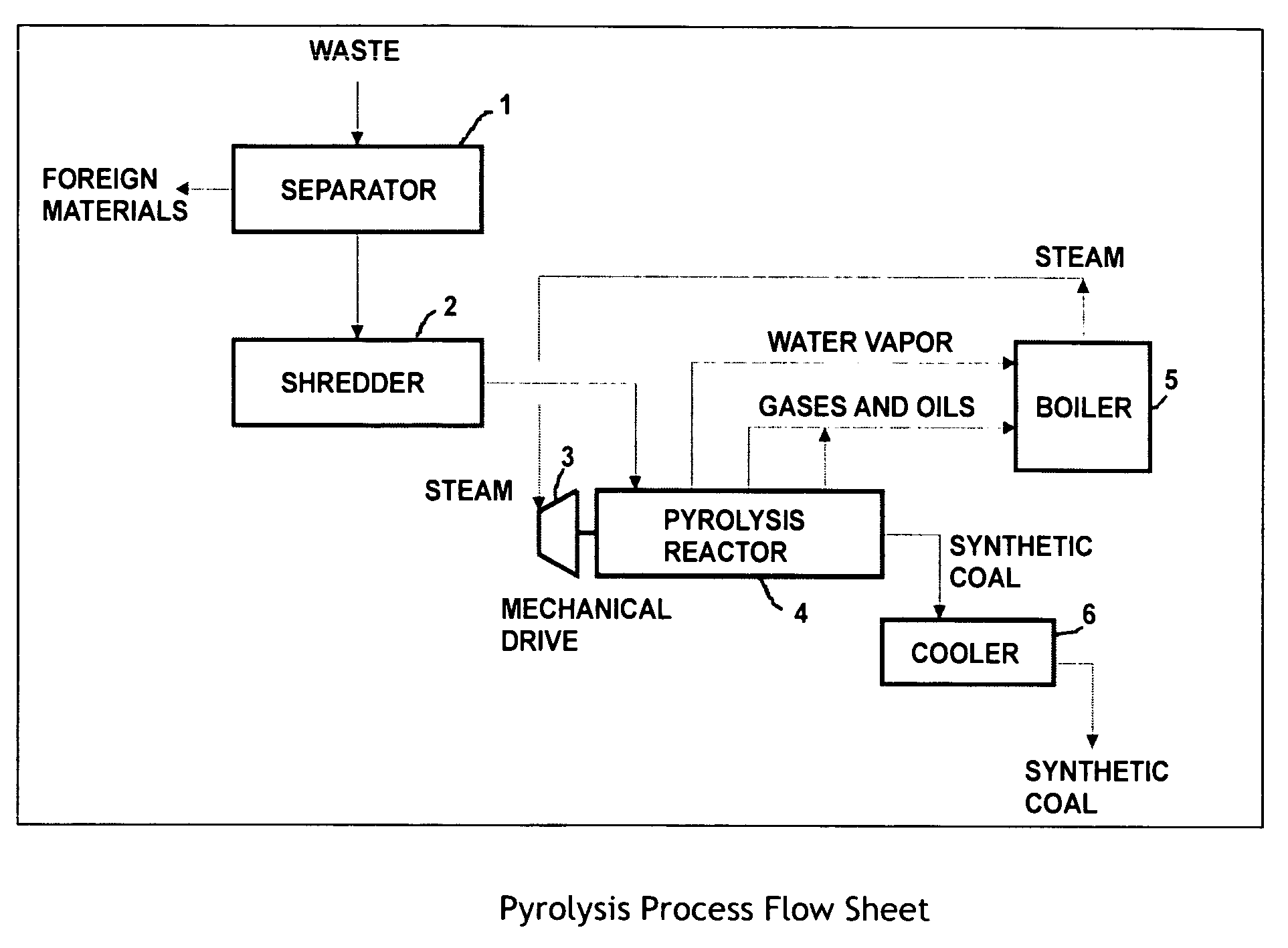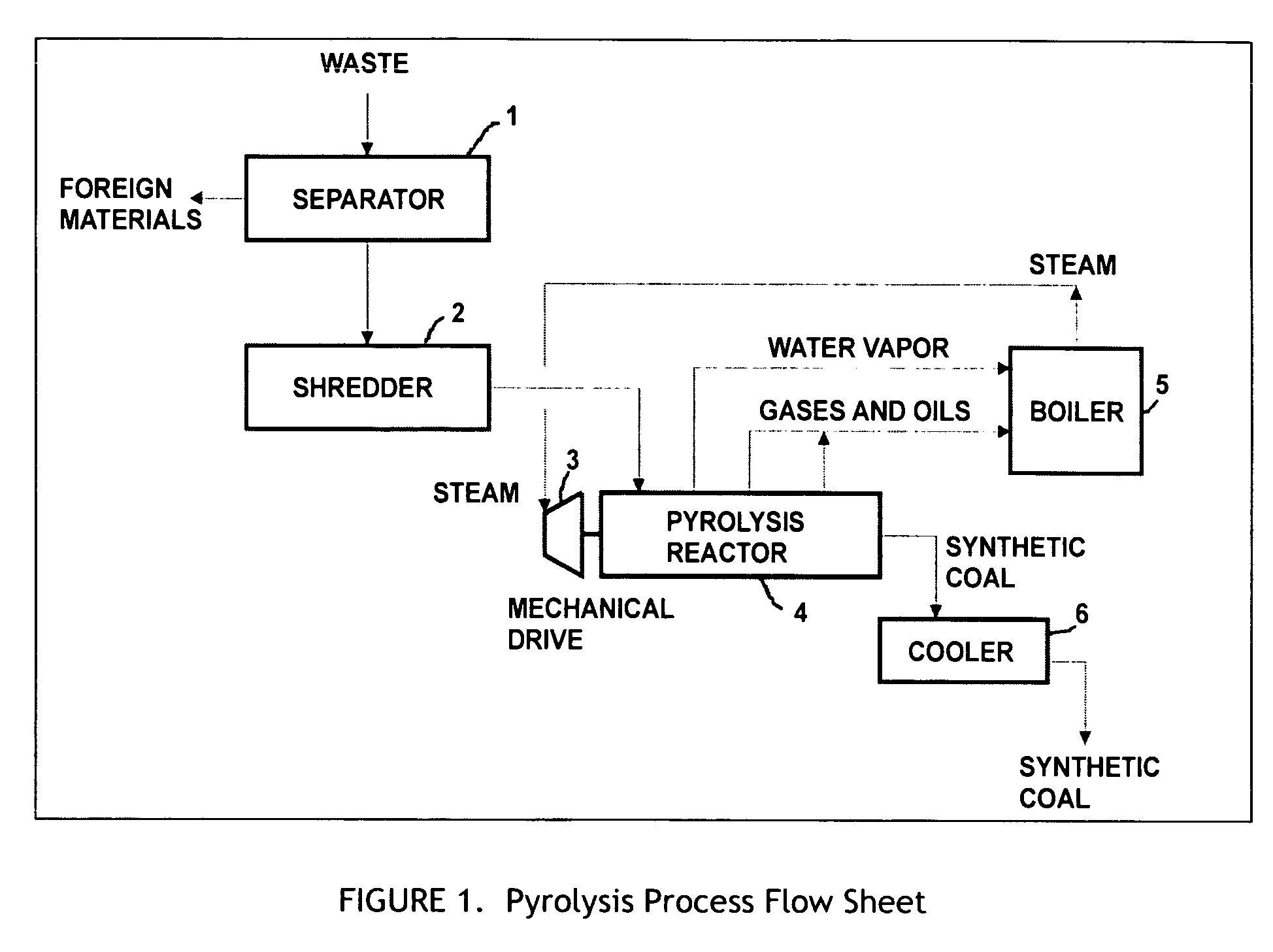Waste conversion process
a waste and process technology, applied in the direction of fuels, mechanical conveying coke ovens, charging devices, etc., can solve the problems of not being able to solve the full waste problem, not being able to solve the waste problem in full, and most components of the waste stream do not have enough economic value to offset the cost of separation and recovery
- Summary
- Abstract
- Description
- Claims
- Application Information
AI Technical Summary
Benefits of technology
Problems solved by technology
Method used
Image
Examples
example 1
[0051] Initially, 2000 pounds of urban waste are sorted to remove foreign material (FIG. 1), and shredded to produce approximately 1500 pounds of organic matter equivalent to Refuse Derived Fuel (RDF). The shredded waste material is fed by metered conveyor to the feed port of the pyrolysis reactor 4 (see FIG. 2), where it is conveyed and compacted by the internal reactor augurs 15, which deliver it to the first mixing zone 9. Here intense mixing converts mechanical work into direct in-situ heating of the waste materials through shear forces within the viscous material. During the short period where the waste is maintained within the first mixing zone 9, the temperature of the waste is increased to approximately 260° F., liberating moisture in the form of water vapor. The waste Leaves the mixing zone, passing into an area without compaction, which permits the vapors and solids to separate, with the water vapor leaving the reactor from a vent 12 on its top surface, at a temperature of...
example 2
[0055] An industrial waste of approximately equal parts of cardboard, waste wood and mixed plastics, is shredded and fed to the reactor. The solid product of pyrolysis, approximately 54.8 percent by weight of the initial feedstock, is granular in nature, and has had a moisture content of approximately 1.1%, a calorific value of approximately 11,470 Btus / lb, and a sulfur content of approximately 0.06%. The oils produced from this feedstock exhibited a specific gravity of 1.12, and a viscosity of 5.1 centipoise at 60° F., roughly comparable to kerosene.
example 3
[0056] A mixture of composting plant reject materials, including sand, grit, broken glass, as well as cardboard containers, mixed plastics, leather goods, soiled diapers and other waste materials, is shredded and fed to the reactor. The solid product of pyrolysis, approximately 64 percent by weight of the initial feedstock, is granular in nature, has a moisture content of 0.6%, a calorific value of approximaterly 8,150 Btus / pound, and a sulfur content of approximaterly 0.2%. The oils produced from this feedstock are free flowing at room temperature, and have a moisture-free calorific value of approximately 11,650 Btus / pound.
PUM
| Property | Measurement | Unit |
|---|---|---|
| temperature | aaaaa | aaaaa |
| temperature | aaaaa | aaaaa |
| temperature | aaaaa | aaaaa |
Abstract
Description
Claims
Application Information
 Login to View More
Login to View More - R&D
- Intellectual Property
- Life Sciences
- Materials
- Tech Scout
- Unparalleled Data Quality
- Higher Quality Content
- 60% Fewer Hallucinations
Browse by: Latest US Patents, China's latest patents, Technical Efficacy Thesaurus, Application Domain, Technology Topic, Popular Technical Reports.
© 2025 PatSnap. All rights reserved.Legal|Privacy policy|Modern Slavery Act Transparency Statement|Sitemap|About US| Contact US: help@patsnap.com



